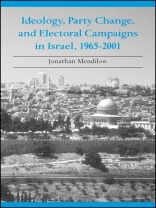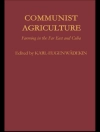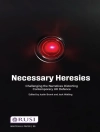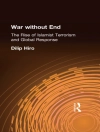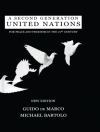Explores the turbulent changes in Israel party politics since the mid-1960s.
The tumultuous and rapid political change experienced by Israel since 1965 has been reflected in the history of its party system. In this book, Jonathan Mendilow examines the party and party system transformations through the lens of the electoral campaigns that defined and reflected them. He shows that the relative stability of the dominant party system bequeathed from the pre-independence era was shattered in the 1960s, and replaced by cluster parties that vied for power in the ideological center, only to decline and be replaced in turn in the 1980s and early 1990s by ideological party blocs locked in centrifugal competition. With the separate direct election of the prime minister since the mid-1990s, there has been yet a third profound realignment in party structures, ideologies, and modes of campaigning, according to Mendilow.
Spis treści
Tables
Acknowledgments
1. Introduction
I. Four Variants of the Israeli Party System, 1965–2001
II. The Literature on Party System Change and the Case of Israel
III. Some Methodological Considerations
Part I. The Cluster Party System
2. The Formation of the Cluster Parties
I. Introduction: The First Israeli Party System
II. Party Clustering on the Right, 1955–1965
III. Party Clustering on the Left, 1959–1965
3. The Logic of the New Party System
I. Cluster Parties: Organizational and Ideological Dimensions
II. Ideological Depolarization
III. Structural Polarization
IV. Changes in Party Competition, Membership, and Finance
V. The Yom Kippur War and its Effects
VI. Summary and Conclusions
Part II. The Party-Bloc System
4. The Transition to the Party-Bloc System
I. Introduction: The Twilight of the Cluster Party System
II. Party Cluster Stability and the Elections of 1981
III. Campaign 1984: The Turning Point
5. The Campaigns of 1988 and 1992 and the Heyday of the Party-Bloc System
I. 1988, 1992, and the New Rules of the Game II. The Campaign of 1988 and Labor’s Forced Conversion
III. 1992—The Coercion of the Labor and Likud Campaigns
IV. Summary and Conclusions
Part III. The Parlia-Presidential System
6. The Logic of the New System: Candidates in Search of Centers
I. Introduction: On Feeble Parties, Weak-Strong Prime Ministers, and Other Schemes of Mice and Men
II. From Oslo to the Opening of the 1996 Campaign: The Likud in Crisis
III. Campaign 1996 and the Strategy of Contrived Bipolarity
7. Straddling the Millennium
I. The Center That Could Not Hold
II. Barak, Mordechai, and Netanyahu: Alternative Routes to the Center
III. Again the Center Cannot Hold
IV. Parlia-Presidentialism’s Last Hurrah
V. Summary
8. Epilogue: A Comparative Perspective
I. The Cases of India and France
II. A Note on the Future of Change
Notes
Bibliography
Index
O autorze
Jonathan Mendilow is Professor of Political Science at Rider University. He is the author of The Romantic Tradition in British Political Thought, and the editor of Political Theory From the French Revolution to the Rise of Fascism.
